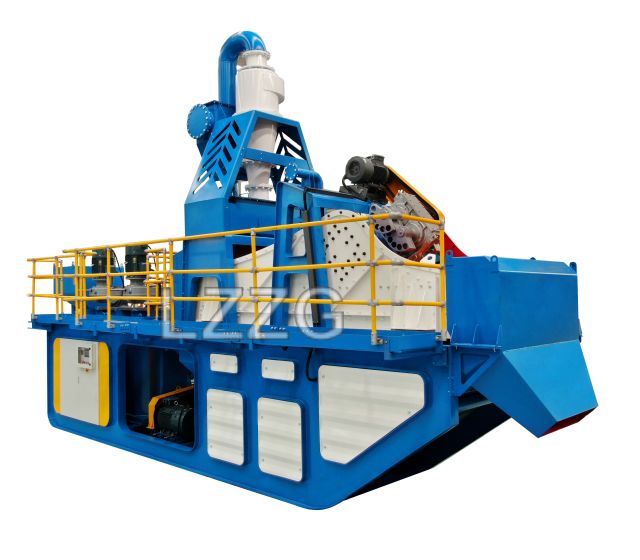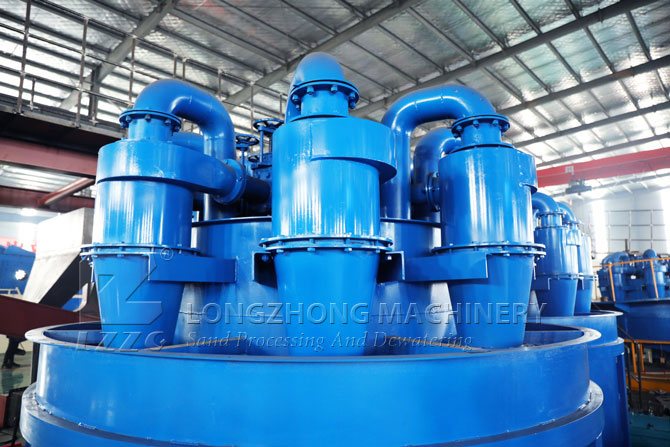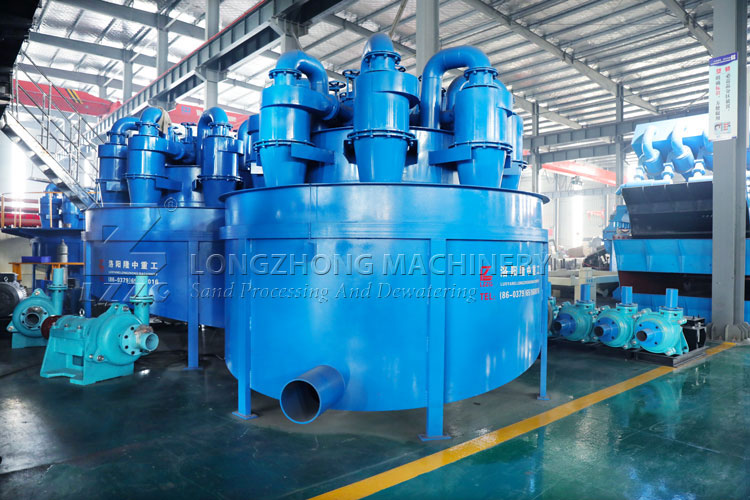Advantages of small diameter cyclones
 March.14,2024
March.14,2024
The small-diameter hydrocyclone is mainly composed of five parts. The upper part is a hollow cylinder, and the lower part is connected to an inverted cone. These two parts are combined together to form the working cylinder of the hydrocyclone. In the uppermost part of the working cylinder is an overflow pipe, connected to it is the ore feeding pipe, and in the lower part of the cylindrical cylinder is the sand settling port. The pressure of the slurry fed into the upper part of the cylinder is 0.2-0.5MPa, and the speed is 5-12m/s. The slurry rotates at high speed in the cylinder, which can generate large centrifugal force. Different particles in the slurry produce different centrifugal forces. The heavier particles will be thrown to the wall of the cylindrical tube, deposited at the bottom of the tube in a certain rotation trajectory, and discharged in the form of dust and sand.
Small-diameter cyclones are suitable for the classification of fine particles. In the kaolin mineral processing process, sand and gravel with very fine particles are classified and separated, and the selection requirements for cyclones are very strict. Generally, a hydrocyclone of 10-50mm is required, and in the actual ultra-fine graded cyclone, the part with a longer cylinder and a smaller cone in the cyclone composition is selected.
The size of the sand sinking spout will affect the water outlet diameter of the cyclone, thereby affecting the water flow characteristics. For example, a smaller water outlet diameter will enhance the centrifugal effect of the cyclone and help separate small suspended particles, but it may also increase the resistance to solid particles and cause particle accumulation.
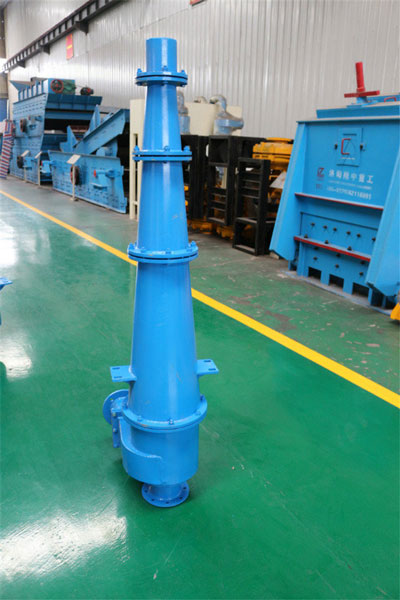
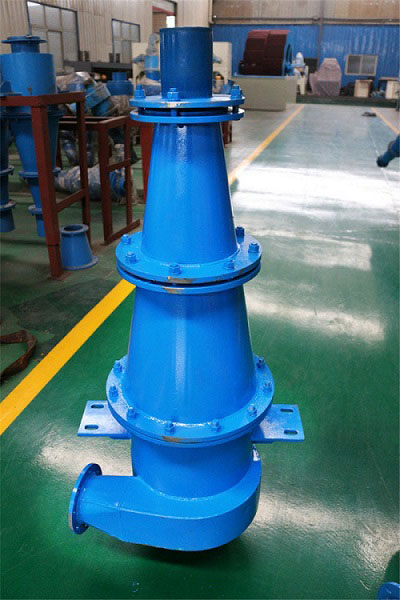
How to choose the model size of cyclone
The basis for selecting a hydrocyclone is: ① The volume of slurry required to be processed Q (m3/h); ② The classification particle size (or the maximum overflow particle size) d (mm).
First, determine the diameter D of the cyclone based on Q and d. Generally, when the overflow is thicker and the production capacity is large, a large-sized cyclone is used, otherwise a small-sized cyclone is used. When the required production capacity is large and the overflow is very thin, small-sized cyclones can be connected in parallel to form a cyclone group.


